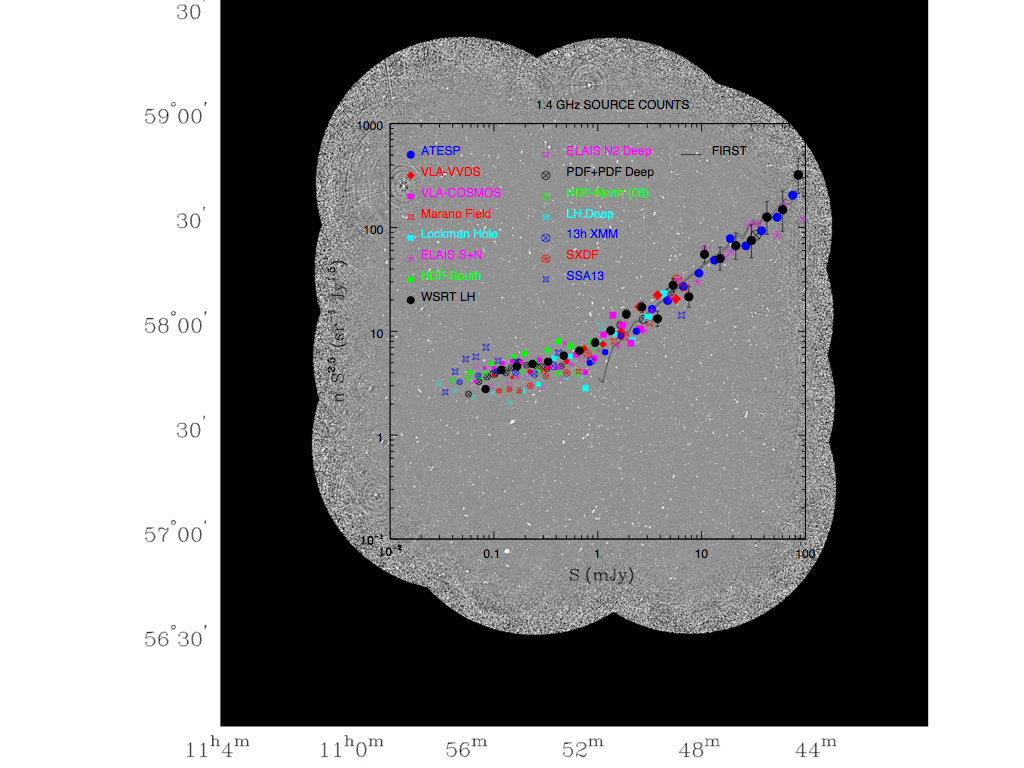Daily Image
15-07-2011The AGN component in deep radio fields: the Lockman Hole project
| Submitter: | Gabriele Guglielmino, Isabella Prandoni, Raffaella Morganti |
| Description: | One of the most debated issues about sub-milliJy radio sources, responsible for the steepening of the 1.4 GHz sources counts, is the origin of their radio emission. Understanding whether the dominant triggering process is star formation or low luminosity nuclear activity has important implications for the study of the star formation/black hole accretion history of radio-selected samples. In order to shed light on the physical properties of sub-mJy sources, an important role is played by multi-frequency radio observations: radio spectral indices may help to constrain the origin of the radio emission allowing to distinguish between self-absorbed AGN cores and optically thin synchrotron emission typical of star-forming galaxies and/or AGN radio lobes. This can be done if high-resolution radio data are available and source structures can be inferred. Radio spectra may also be fundamental to understand the actual link between the nature of the radio emission and the associated galaxy optical light. In order to make progress on this topic, the ASTRON and Institute of Radio Astronomy (Bologna) PhD student Gabriele Guglielmino is working under the supervision of Raffaella Morganti and Isabella Prandoni on a large radio mosaic of the Lockman Hole region, obtained with the WSRT. The Lockman Hole is one of the best studied sky regions in different wavebands (in particular optical and infrared); therefore providing important complementary information (for example redshifts) to the radio data. The Lockman Hole was observed with the WSRT at 1.4 GHz with mosaic observations covering a total area of about 6.6 square degrees. The data reduction is now completed and has resulted in the deepest image made (noise level down to 11 microJy) on such a large area of the sky. The final source catalogue includes 5815 single sources and 178 multi-component sources. Most of the sources (more than 90%) are sub-mJy sources, and about 40% have fluxes below 100 microJy. A paper presenting the results (which will also be an important part of Gabriele's PhD thesis) is in progress. The next step of this project is to complement the WSRT data with LOFAR observations. Some LOFAR-LBA data have been already obtained. The LOFAR observations can play an important role allowing, for the very first time, to observe the sub-mJy source population at very low frequencies (60-200 MHz), a frequency domain never explored before, where self-absorption phenomena are expected to be very important. |
| Copyright: | ASTRON/IRA Bologna |
| Tweet |  |
